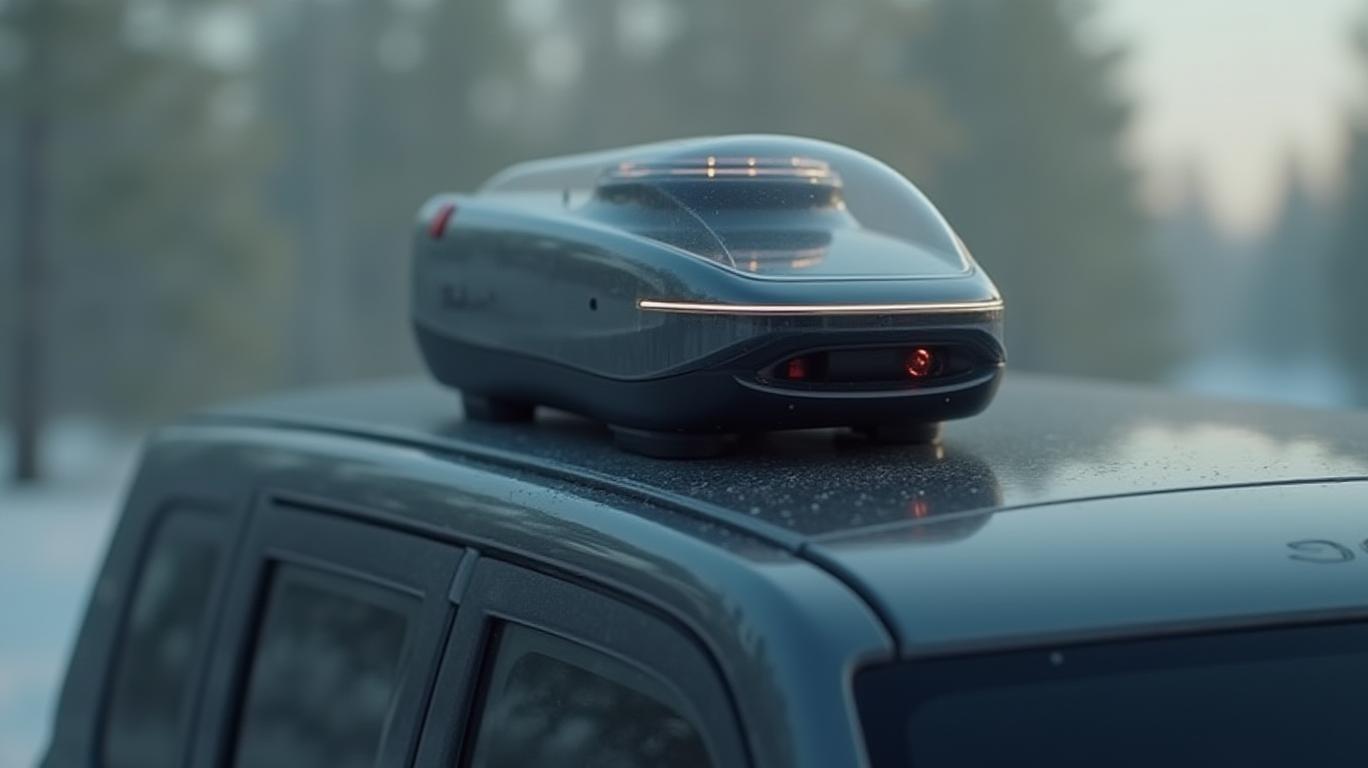Apollo Rising: AEye and LITEON’s Lidar Breakthrough Signals Autonomous Tech Shift
The automotive industry’s relentless pursuit of safer, smarter, and more autonomous vehicles has long hinged on a critical technological hurdle: lidar. Once a niche component, lidar sensors are now central to enabling Level 3-5 autonomy, and their evolution could determine which companies lead the next wave of mobility innovation. Against this backdrop,
, Inc. (NASDAQ: EYEN) and LITEON Technology Corporation (TWSE: 2301) have delivered a milestone with the production of the first Apollo lidar units from LITEON’s Taipei manufacturing line. This development marks a pivotal step toward scaling high-volume lidar production—a capability that could redefine the competitive landscape for autonomous driving solutions.
The Partnership’s Strategic Powerhouse
The collaboration between AEye and LITEON combines complementary strengths: AEye’s software-defined lidar innovation and LITEON’s decades of automotive manufacturing expertise. For AEye, this partnership enables a capital-light model, allowing it to focus on R&D while relying on LITEON’s proven industrialization capabilities to meet OEM demands. LITEON, meanwhile, expands its footprint in advanced mobility, aligning with its "clean mobility" strategy and bolstering its position as a Tier 1 supplier for next-gen automotive tech.
The stakes are high. The global lidar market is projected to grow at a 23% CAGR, reaching $8.5 billion by 2030, driven by autonomous vehicle adoption and safety regulations. AEye’s Apollo, with its 1-km detection range at highway speeds—the longest among commercially viable lidars—positions it to capture a significant share of this market. Unlike competitors’ 905 nm systems, Apollo uses 1550 nm lasers, enabling higher power efficiency and behind-windshield integration without sacrificing performance. This flexibility allows automakers to design vehicles without compromising aesthetics or safety, a critical advantage in an industry obsessed with both.
Technical Differentiation: More Than Just Range
Apollo’s technical specs are engineered to address OEM pain points. Its 4Sight™ Intelligent Sensing Platform prioritizes adaptive data capture, reducing noise and enhancing object detection speed—a lifeline in split-second driving scenarios. Over-the-air upgradability ensures future-proofing, aligning with the automotive industry’s shift toward software-defined vehicles. Additionally, its compact, power-efficient design fits seamlessly into vehicle architectures, from SUVs to electric sedans, broadening its appeal across OEMs.
The behind-windshield integration is a game-changer. Competitors’ lidar systems often require roof mounts, which disrupt aerodynamics and design. Apollo’s ability to integrate invisibly into a vehicle’s front grille or windshield opens new possibilities for automakers, such as Tesla (TSLA) or Ford (F), seeking to blend safety with style. This could give AEye-LITEON a first-mover advantage in a market where design flexibility is a key differentiator.
Market Implications: A New Bar for Lidar
The partnership’s success hinges on scaling production without compromising quality—a challenge that has tripped up many lidar startups. LITEON’s track record in mass-producing opto-electronic components (e.g., for Apple’s iPhone) instills confidence in its ability to meet OEM volume demands. However, risks remain: delays in ramping up production, variability in real-world performance, and competition from rivals like Luminar (LAZR) or Velodyne (VLDR) leveraging their own supplier networks.
Yet the May 2025 milestone is tangible proof of progress. With Apollo now in production, AEye can pivot from a "what if" innovator to a supplier of proven, scalable solutions. This could accelerate adoption among OEMs, particularly those aiming to meet Euro NCAP’s 2025 safety mandates requiring advanced driver-assistance systems (ADAS) on all vehicles.
Risk and Reward: A Calculated Bet
Investors must weigh the risks against the potential upside. AEye’s valuation is tied to its ability to secure long-term contracts with OEMs—a process that could take years. LITEON’s manufacturing costs and gross margins will also influence profitability. However, early partnerships with automakers like Honda (HMC), which has tested AEye’s systems, suggest growing industry confidence.
The real prize is the autonomous mobility ecosystem. By 2030, lidar-equipped vehicles could represent $130 billion in annual revenue, according to Yole Développement. AEye’s focus on software-defined lidar and LITEON’s industrial might could carve out a durable niche here. Even if near-term profits are elusive, the strategic moat built through this partnership—technical superiority, scalable production, and OEM trust—could pay dividends as autonomous systems mature.
Conclusion: A Strategic Shift with Long-Term Legs
AEye and LITEON’s Apollo milestone is more than a production achievement—it’s a signal of a broader industry shift toward lidar-centric autonomous systems. With Apollo’s 1-km range, behind-windshield integration, and over-the-air upgradability, the partnership has set new standards for performance and scalability. While risks like production hiccups or pricing pressures linger, the alliance’s alignment of innovation and manufacturing excellence positions it to capture a meaningful slice of the lidar market.
For investors, the calculus is clear: this is a foundational step toward a future where lidar is as essential as the engine itself. As autonomous driving transitions from hype to reality, companies that marry cutting-edge tech with reliable mass production—like AEye and LITEON—will likely emerge as industry leaders. The road ahead is bumpy, but the destination is worth the ride.

Comments
No comments yet